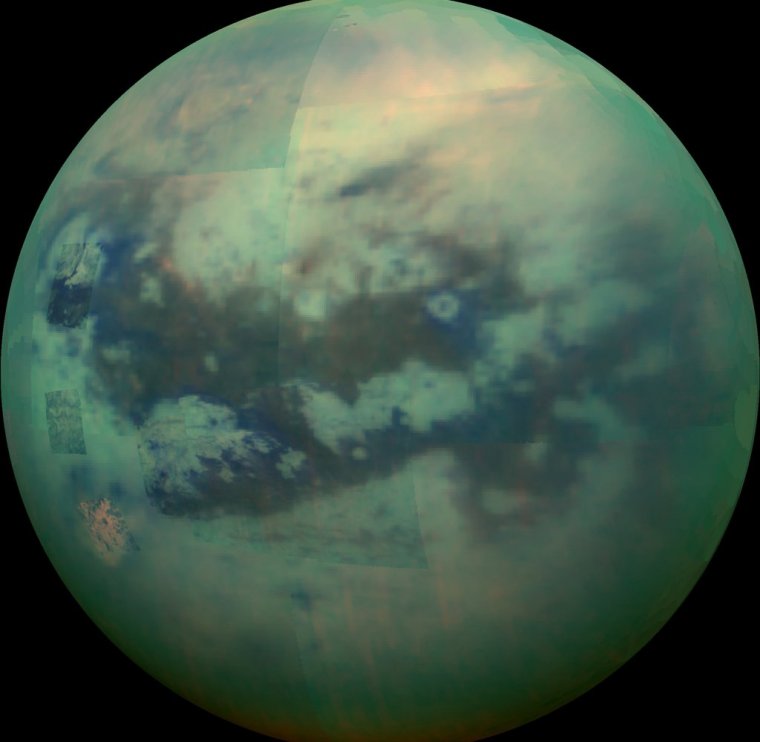| News / Science News |
Impact Craters Reveal Details of Titan's Dynamic Surface Weathering
Scientists have used data from NASA's Cassini mission to delve into the impact craters on the surface of Titan, revealing more detail than ever before about how the craters evolve and how weather drives changes on the surface of Saturn's mammoth moon.

This composite image shows an infrared view of Saturn's moon Titan from NASA's Cassini spacecraft, captured in 2015. Several places on the image, visible through the moon's hazy atmosphere, show more detail because those areas were acquired near closest approach. Image Credit: NASA/JPL/University of Arizona/University of Idaho
Like Earth, Titan has a thick atmosphere that acts as a protective shield from meteoroids; meanwhile, erosion and other geologic processes efficiently erase craters made by meteoroids that do reach the surface. The result is far fewer impacts and craters than on other moons. Even so, because impacts stir up what lies beneath and expose it, Titan's impact craters reveal a lot.
The new examination showed that they can be split into two categories: those in the fields of dunes around Titan's equator and those in the vast plains at midlatitudes (between the equatorial zone and the poles).
Their location and their makeup are connected: The craters among the dunes at the equator consist completely of organic material, while craters in the midlatitude plains are a mix of organic materials, water ice, and a small amount of methane-like ice.
Some of the new results reinforce what scientists knew about the craters - that the mixture of organic material and water ice is created by the heat of impact, and those surfaces are then washed by methane rain.
But while researchers found that cleaning process happening in the midlatitude plains, they discovered that it's not happening in the equatorial region; instead, those impact areas are quickly covered by a thin layer of sand sediment.
That means Titan's atmosphere and weather aren't just shaping the surface of Titan; they're also driving a physical process that affects which materials remain exposed at the surface, the authors found.
"The most exciting part of our results is that we found evidence of Titan's dynamic surface hidden in the craters, which has allowed us to infer one of the most complete stories of Titan's surface evolution scenario to date," said Anezina Solomonidou, a research fellow at ESA (European Space Agency).
"Locations and latitudes seem to unveil many of Titan's secrets, showing us that the surface is actively connected with atmospheric processes and possibly with internal ones," Solomonidou said.
Scientists are eager to learn more about Titan's potential for astrobiology, which is the study of the origins and evolution of life in the universe.
Titan is an ocean world, with a sea of water and ammonia under its crust. And as scientists look for pathways for organic material to travel from the surface to the ocean underneath, impact craters offer a unique window into the subsurface.
The new research also found that one impact site, called Selk Crater, is completely covered with organics and untouched by the rain process that cleans the surface of other craters.
Selk is in fact a target of NASA's Dragonfly mission, set to launch in 2027; the rotorcraft-lander will investigate key astrobiology questions as it searches for biologically important chemistry similar to early Earth before life emerged. (NASA)
YOU MAY ALSO LIKE





